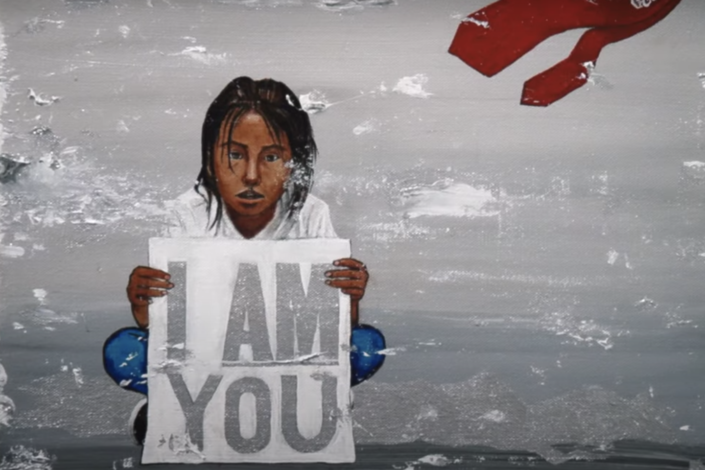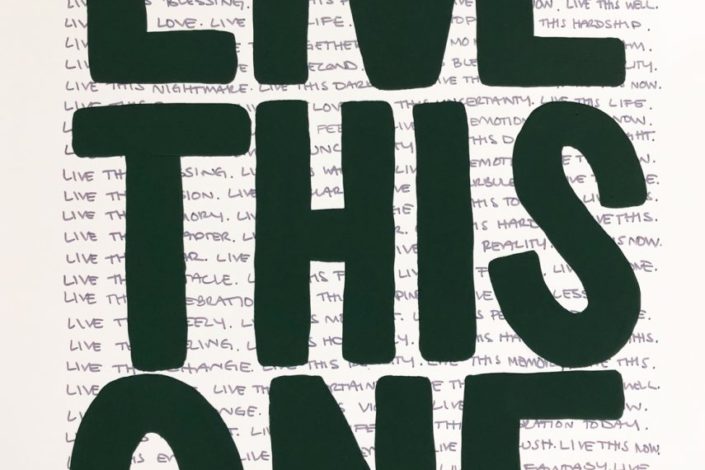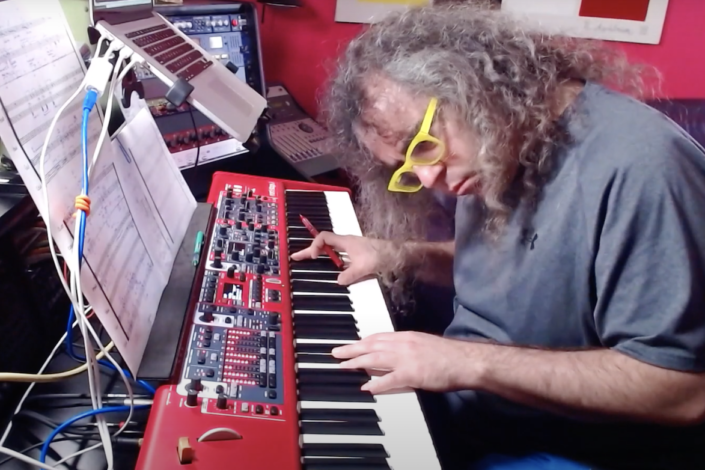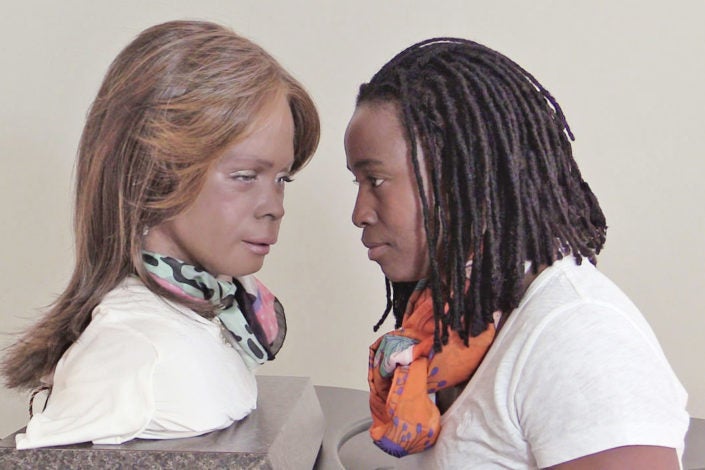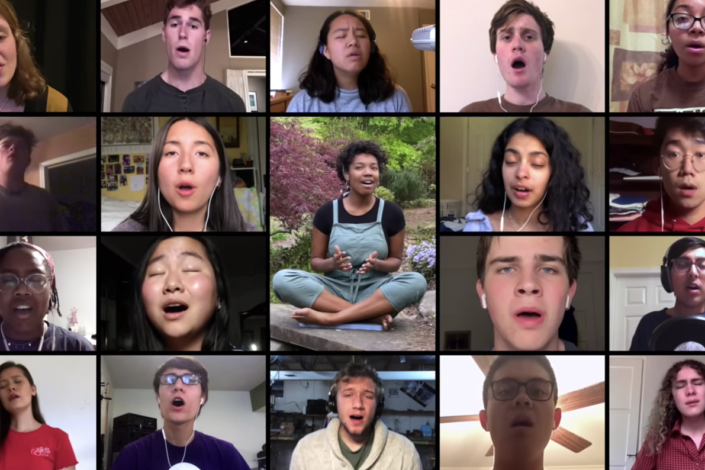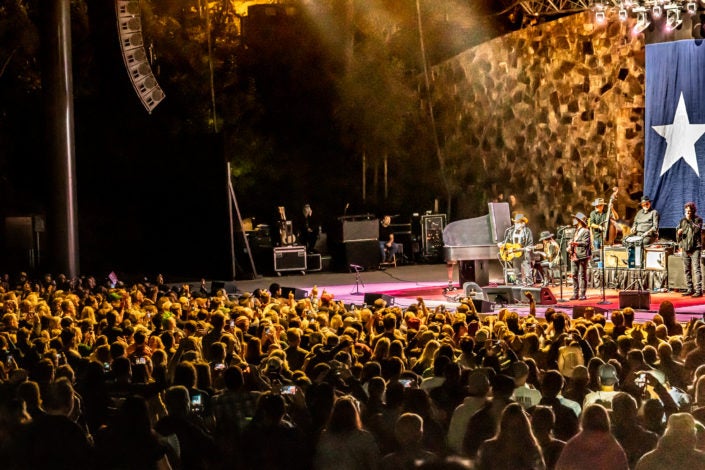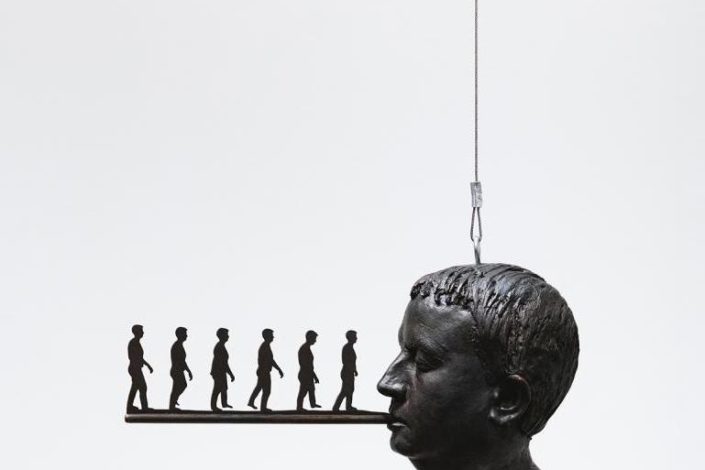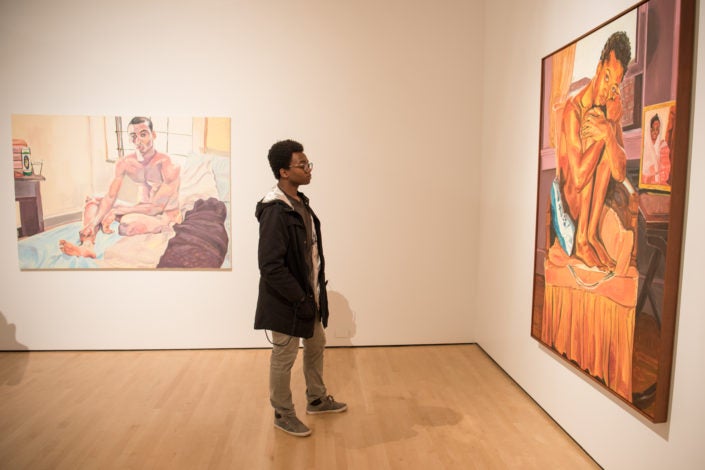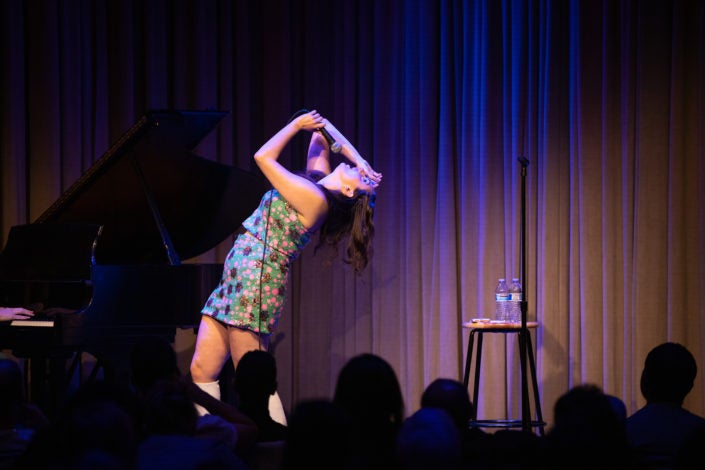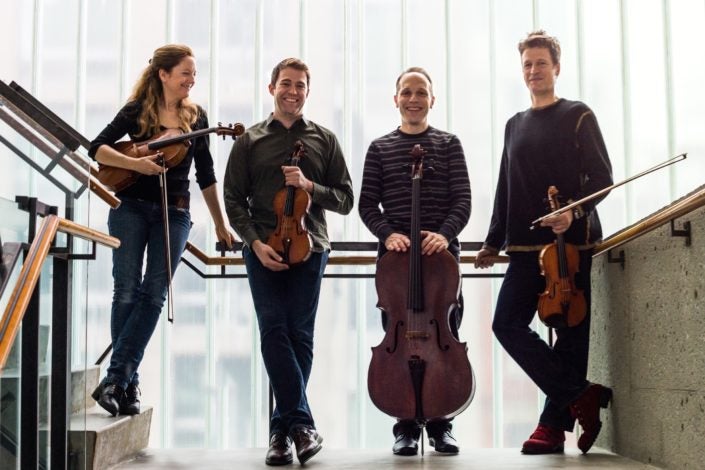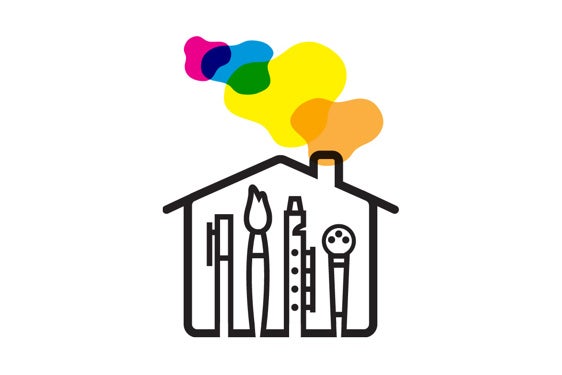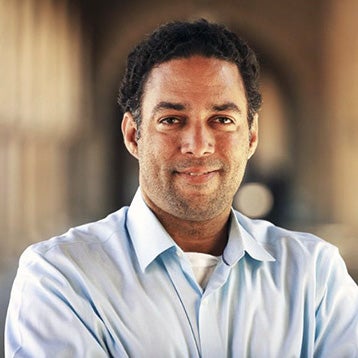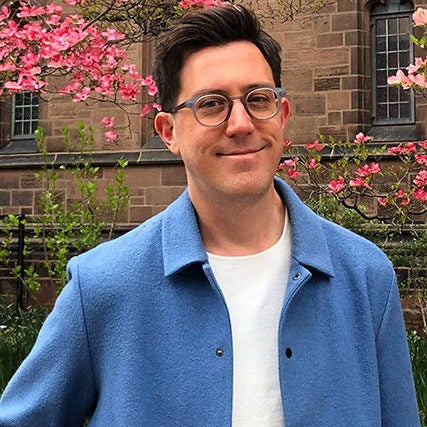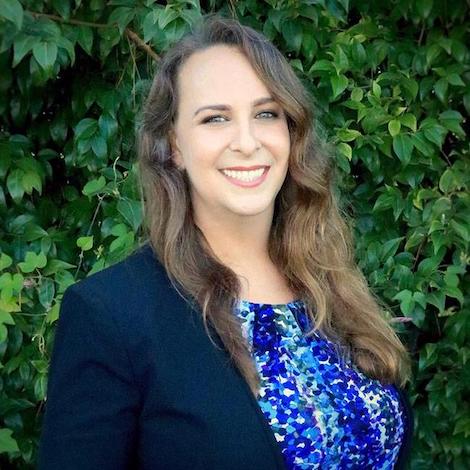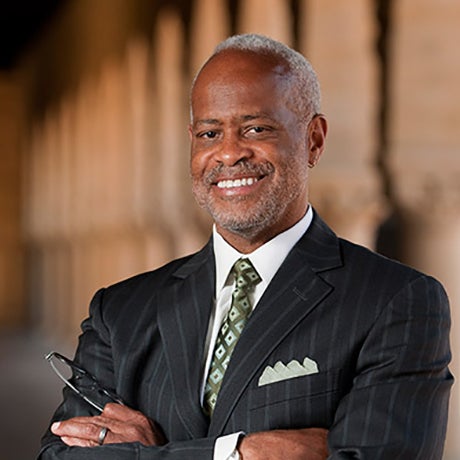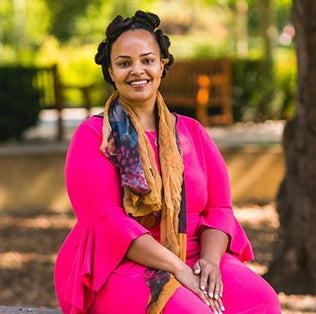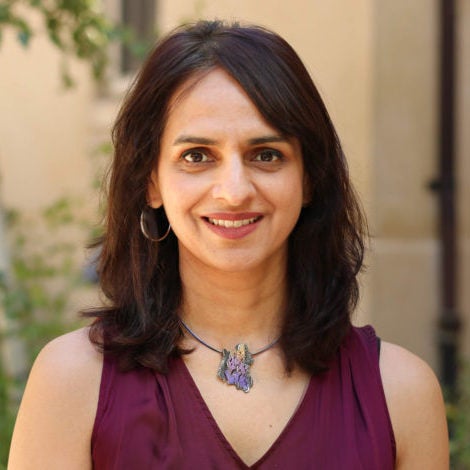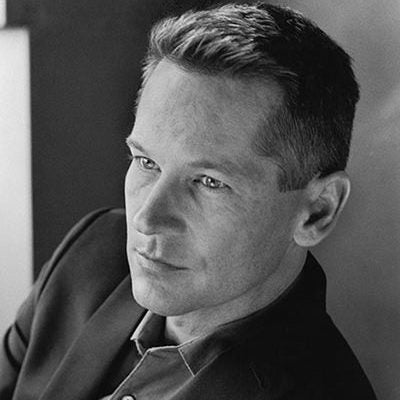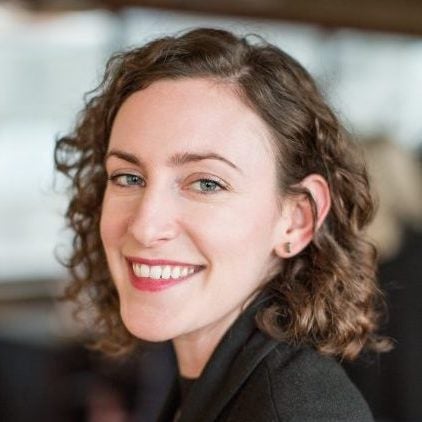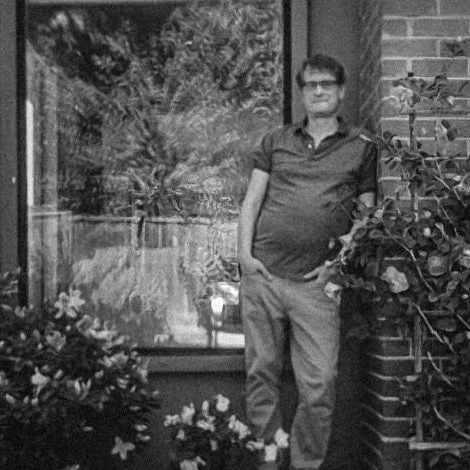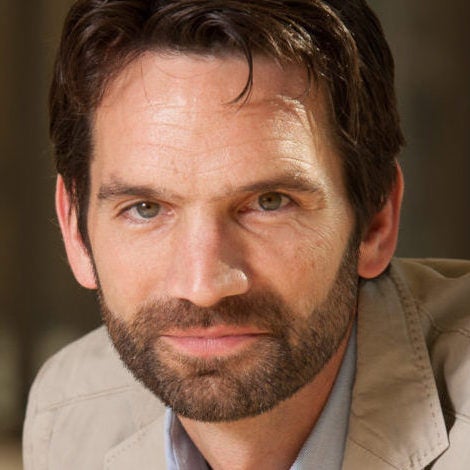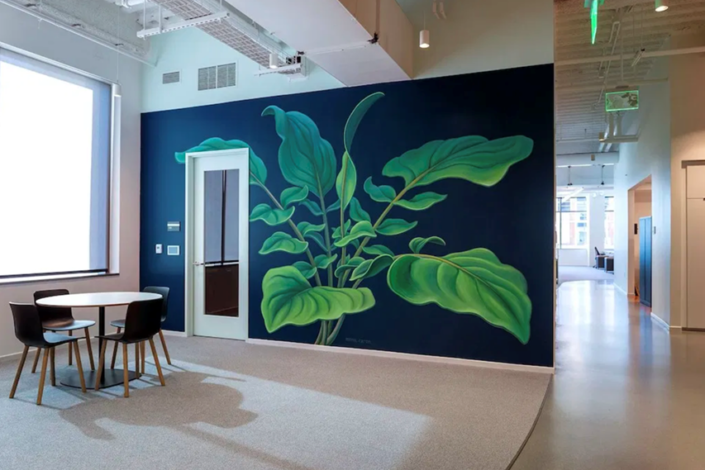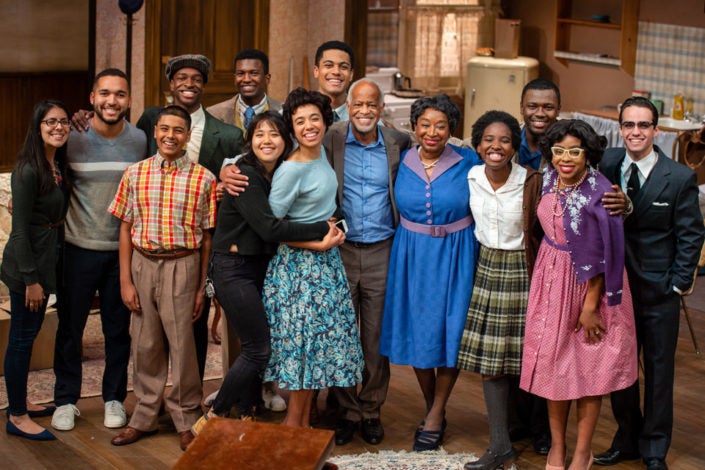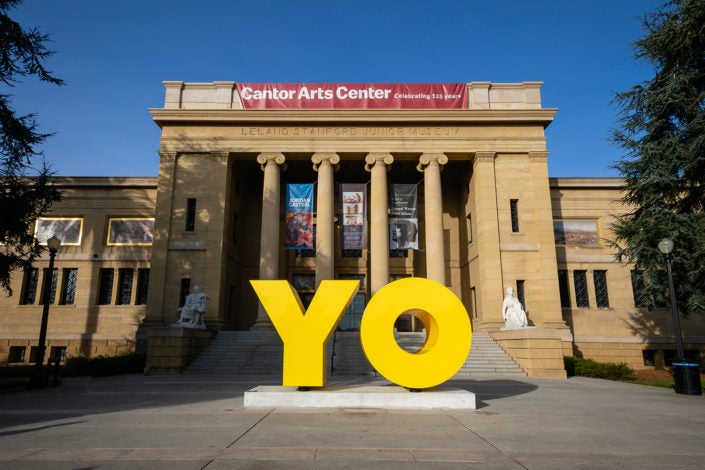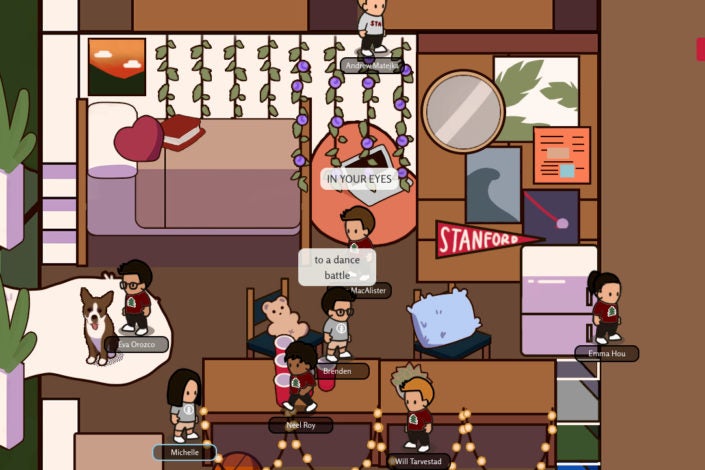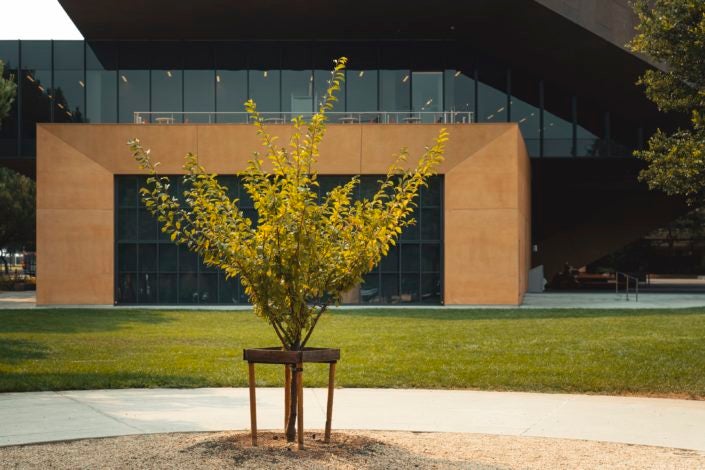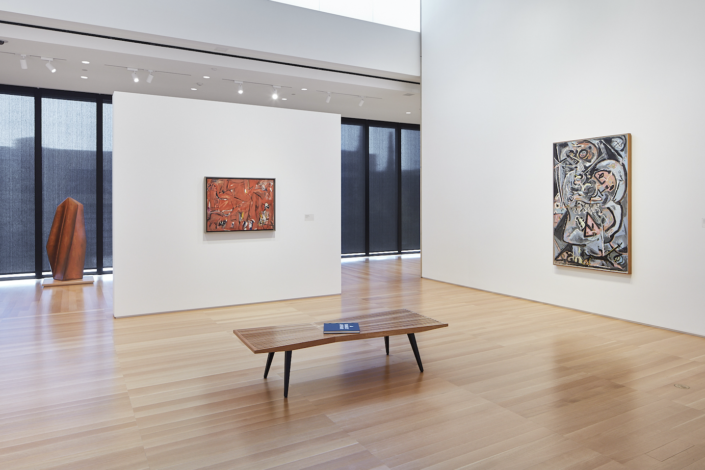STANFORD ARTS | 2019-2020
In April 2020, Vice President for the Arts Harry Elam delivered his final presentation to the Stanford Faculty Senate before assuming the presidency of Occidental College. He said that the arts had informed his work, his scholarship and life at Stanford and that in his various roles he sought to make the arts “inescapable” for students.
In a year shaped by a global pandemic, the arts were also essential. Acknowledging the disruptive impact of COVID-19, which sent students, faculty and staff home before the end of winter quarter, Elam stated, “Clearly, the arts are only the more poignant, relevant and needed when we are sheltering-in-place, whether it is Italians singing from their balconies, or people logging into the Stanford art sites Museums from Home or The Show Must Go Online.”
And 2019-20 wasn’t just the year of COVID. Throughout the entire academic year, artists working and studying on campus rose to respond to issues of the day and made art an integral component of local and global dialogues. Exhibitions and performances flourished across in-person and virtual environments. New arts leaders emerged through appointment and application and the face of the campus changed to reflect progress. In a year of dramatic moments, movements and crises, the arts community worked to remain vocal and connected.
Experience an extraordinary year of Stanford Arts.
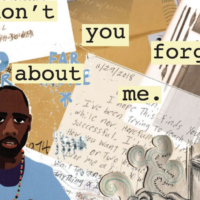
Arts + Justice
The Arts + Justice program, led by the Stanford Arts Institute, partnered with the Center for Comparative Studies in Race and Ethnicity, the Institute for Diversity in the Arts, the Stanford Criminal Justice Center, the Stanford Humanities Center, and the Department of Theater and Performance Studies to bring artists and scholars to the campus community to reimagine the art of social justice. In winter quarter, SAI cosponsored the Prison Renaissance Project’s exhibition of artwork created through collaborations between Stanford students and faculty and incarcerated artists, including the zine Incarceratedly Yours.”

Detention at the Border of Language
In October 2019, Stanford’s Coulter Art Gallery hosted a survey of Professor Enrique Chagoya’s paintings, drawings and prints titled Detention at the Border of Language. The survey spanned two decades of his career and it included five never before seen works that were finished in 2019. Through his work, Chagoya explored issues of ethnicity, immigration and borders using satire and humor to “open the doors to thought-provoking situations we all experience.” Creating art, he says, helps him exorcise anxieties and think about positive changes. The Coulter Art Gallery is managed by the Department of Art and Art History and is located in the McMurtry Building in Stanford’s arts district.
Watch a video of Enrique Chagoya talking about the exhibition.
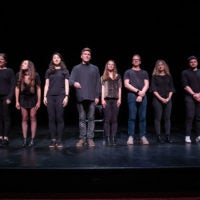
The Manic Monologues
Geology PhD student Zack Burton’s graduate career was derailed after a series of delusions led him to the top of a campus parking garage, where he seriously considered hurting himself. The crisis, which sent him to the emergency department and into therapy, forced him to delay his academic and professional pursuits. It also tested his personal relationships, most notably with his girlfriend, Elisa Hofmeister, ’18. Perhaps the greatest challenge for Burton was his eventual diagnosis of bipolar disorder and having to come to terms with the shame and stigma associated with mental illness. But on his road to recovery and acceptance, Burton found an unlikely outlet to address his mental health struggles. With Hofmeister, he produced The Manic Monologues, a stage play featuring a series of true stories about mental illness. After a premiere at Stanford in May 2019, the play was performed to sold out audiences in Des Moines, Idaho, in November 2019 and at University of California, Los Angeles in February 2020.

COVID-19 Creative Community Response Grant
The COVID-19 Creative Community Response Grant, administered by the Office of the Vice President for the Arts, provided funding for projects that steward the power of art toward community connection in uncertain times. The grant program ran during the spring quarter of 2020 and 46 grants were issued to support student and campus organization projects. The range of creative projects included mask-making kits, storytelling podcasts, music ensembles performing via Zoom and visual arts displays. One grantee, Sonia Garcia, a master’s student in design impact and a Knight-Hennessy Scholar, offered live and pre-recorded painting workshops to help forge connections in a time of ongoing uncertainty.

Creative Agency in the Pandemic World
Artists have faced constraints that affected their ability to practice their craft throughout history. The limitations artists face due to COVID-19—from a lack of access to concert halls and theaters to the inability to collaborate freely with others in person—are not necessarily new. Yet they also pose an opportunity for creative growth, according to music professor Mark Applebaum, who came back early from sabbatical to teach the spring course Creative Agency in the Pandemic World. Applebaum, the Leland and Edith Smith Professor in the School of Humanities and Sciences, wanted to help a wide range of artists figure out how to create in this environment.
Read more about the course and hear Applebaum talk about Pandemic Art.

Stephanie Dinkins: HAI resident artist
Stanford’s new Institute for Human-Centered Artificial Intelligence (HAI), an interdisciplinary, global hub for artificial intelligence thinkers, learners, researchers, developers, builders and users, co-hosted its first HAI resident artist, Stephanie Dinkins, in fall 2019. The residency was a collaboration with Sundance Institute’s New Frontier Lab Programs, and co-hosts on campus were the Office of the Vice President for the Arts and the Stanford Humanities Center. Dinkins was on campus developing her project Not the Only One, a multigenerational memoir of one black American family told from the “mind” of an artificial intelligence entity with an evolving intellect.
Watch a video of Stephanie Dinkins talking about her project and residency.
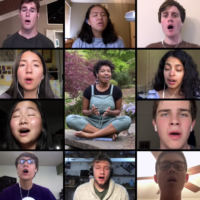
Talisman performs "Amazing Grace"
Although members of Talisman were home during spring quarter, that didn’t stop the student a cappella group from coming together in April 2020 for a special performance of “Amazing Grace.” In one of the first digital arts offerings after the shelter-in-place order, members individually recorded their parts, which were then pieced together to form a cohesive ensemble.

Stanford Office of the Vice President for the Arts stands in solidarity with Black students, colleagues, artists and activists fighting against racial violence, inequality and systemic injustice. We believe that the arts can strengthen our capacity for empathy and action and usher in the kinds of transformation the world needs. We work to create environments in which artists thrive, and we work to amplify their voices and visions. And yet we also acknowledge the ways in which we fall short. To truly steward the power of the arts toward equity and justice, we must advance our commitment to enacting anti-racist practices and transform the organizational structures that we operate within.
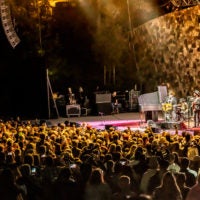
Stanford Live: Indoor and Out
Through partnerships with the San Francisco Symphony, pop promoter Goldenvoice and Stanford’s Student Concert Network (SCN), Stanford Live’s first season in the newly renovated Frost Amphitheater concluded in fall 2019 with a line-up of music legends. In October 2019, American music icons Willie Nelson and Bob Dylan performed on separate nights and broke outdoor attendance records at Frost Amphitheater. Similarly, in November 2019, Joshua Bell and Jon Batiste played back-to-back capacity concerts on Bing Concert Hall’s main stage. It was a banner year for Stanford Live, indoor and out, and when the shelter-in-place order came, Stanford Live quickly pivoted to digital programming.

Terry Berlier: I am what I am not yet
During winter quarter, the Department of Art and Art History presented I am what I am not yet in the Stanford Art Gallery. In this solo exhibition, artist and Associate Professor Terry Berlier brought together her interest in queerness and ecologies using abstract labored forms, kinetic and sound sculpture. Her work suggests a path of reorienting to the world, turning things around so they can be understood differently. Through archival research, Berlier examined collective responses to political threat and those repeated micro-actions and interactions enacted in everyday life. Conceptually, the works in this exhibition did the same, weaving between the crisis in the current U.S. presidency and world instability to queering the possible.
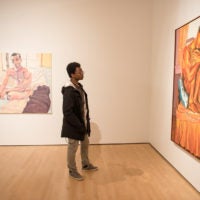
Jordan Casteel: Returning the Gaze
Jordan Casteel: Returning the Gaze, on view at the Cantor during the fall and winter quarters, was the first solo museum show for Harlem-based artist Jordan Casteel, who visited campus to engage with Stanford students and speak at an opening celebration. Featuring paintings made in the last five years, Casteel’s large-scale portraits of Harlem community members are intimate portrayals of often overlooked members of society. Her deeply empathetic approach to portraiture makes her one of the most important emerging artists working today.
Hear Jordan Casteel talk about one of the works in the exhibition.
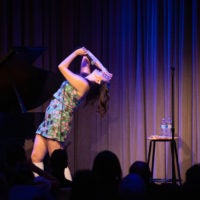
Comedy at the Bing
Stanford Live transformed the Bing Studio into a comedy club for their Comedy at the Bing series that included stand-up comedian Jesus Trejo in September 2019 and New York City-based cabaret comedian Catherine Cohen in February 2020. Student openers from Stanford’s comedy group Stand Up, D performed at both shows. Also in February, Stanford alum Omar Qureshi performed a stand-up set in a show co-presented by Stanford Live and Stanford Concert Network, the student-run organization bringing live music to campus.
Read more about Catherine Cohen and others who performed in Bing Studio.
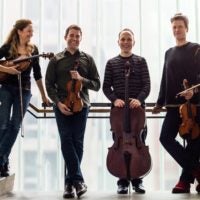
SLSQ at 30
The St. Lawrence String Quartet (SLSQ), Stanford’s ensemble-in-residence, is fiercely committed to building communities through music and education. Whether they’re playing in a nontraditional venue or teaching students and musicians in person or online, the SLSQ strives to make connections with people who might not otherwise have access to chamber music. In 2019, they celebrated 30 years of bringing their insight and musical passion to classrooms across campus, in free online courses and into the local community.

Arts@Home
In March 2020, when in-person arts events, performances and exhibitions started shutting down due to COVID-19, the arts community rallied to find ways for students, faculty, staff, patrons and visitor to continue to listen, learn, view and make art without being on campus. A collection of podcasts, videos, slideshows, digital showcases, webinars, coloring pages and online courses became Arts@Home, a community and student resources to engage with the arts from wherever you are.
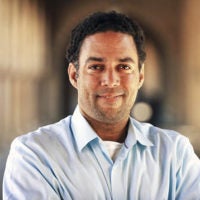
ADAM BANKS
Professor of education in the Graduate School of Education, appointed Faculty Director of IDA. Read more.
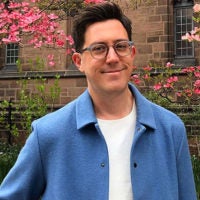
PATRICK R. CROWLEY
Appointed Cantor Associate Curator of European Art. Read more.

MAGGIE DETHLOFF
Appointed Cantor Assistant Curator of Photography and New Media. Read more.
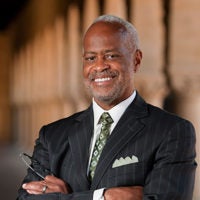
HARRY ELAM
Vice President for the Arts and Vice Provost for Undergraduate Education, appointed the 16th president of Occidental College. Read more.
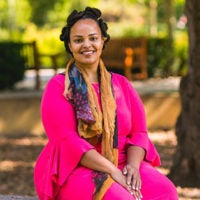
A-LAN HOLT
Former Associate and then Interim Director of IDA, appointed Director of IDA. Read more.

JISHA MENON
Associate Professor of Theater and Performance Studies, appointed the Denning Faculty Director of SAI. Read more.
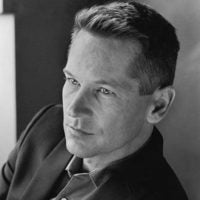
PATRICK PHILLIPS
Professor of English, appointed Interim Director of the Creative Writing Program. Read more.

ANNE SHULOCK
Appointed Assistant Vice President for the Arts. Read more.
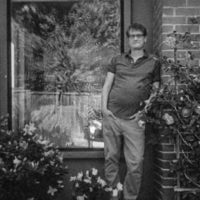
MATTHEW W. SMITH
Professor of German Studies and of Theater and Performance Studies, appointed TAPS Department Chair. Read more.

MATTHEW TIEWS
Associate Vice President for Campus Engagement, appointed Interim Senior Associate Vice President for the Arts. Read more.
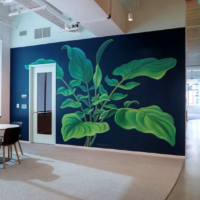
Stanford Redwood City artwork
One of the final steps in transforming Stanford Redwood City from a state-of-the-art campus into a vibrant workplace in the fall of 2019 was the final installations of more than 300 works of art, including paintings, murals and artist posters throughout the campus. The artworks were chosen to complement the contemporary look of the interior architecture and speak to the indoor and outdoor elements of the campus setting.
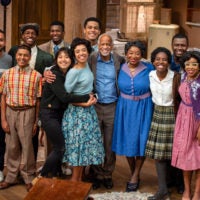
Harry J. Elam, Jr. Theater
In August, the black box theater in Roble Gym, home of the Department of Theater and Performance Studies, was named the Harry J. Elam, Jr. Theater. After a distinguished three-decade tenure at Stanford, Elam was named the 16th president of Occidental College. His career at Stanford left an indelible mark on university life, particularly in the arts where he worked to ensure that the university was a vibrant home for art and artists. It is fitting that his name now graces one of the principal performance spaces on campus.
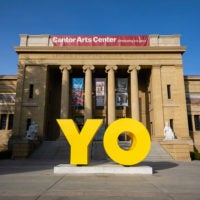
Say hello to OY/YO
The main entrance of the Cantor Arts Center was transformed over winter break in 2019 when Deborah Kass’ bold sculpture OY/YO was installed to welcome guests. Cantor hopes its newest sculpture acts as an extension of the museum’s vision to present art and ideas in contemporary and inclusive ways. The piece was installed in December 2019.
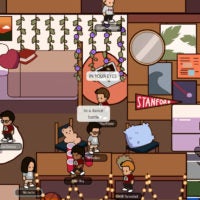
Club Cardinal
Undergraduates Michelle Qin, ’23; WenXin Dong, ’23; Allison Zhang, ’23; Sreya Halder, ’23; and Azhia Harris, ’20, are the creators of Club Cardinal, a virtual reproduction of the Farm that serves as a space for the community to socialize and experience Stanford life while living, working and studying apart. It was created for the Stanford Women in Computer Science (WiCS) Innovation Challenge, a 10-week spring quarter competition for teams of students to create a project guided by an industry professional. Their innovation earned them first place in the competition, a COVID-19 Creative Community Response Grant from the Office of the Vice President for the Arts, and was recently featured in Stanford mediaX’s Very Virtual Retreat.
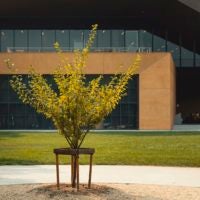
Tree of 40 Fruit
Sam Van Aken is a contemporary artist who works beyond traditional modes of art making, crossing artistic genres and disciplines to develop new perspectives on such themes as communication, botany, agriculture, climatology and the ever-increasing impact of technology. Van Aken’s interventions in the natural and public realm are seen as metaphors that serve as the basis of narrative, sites of place making, and in some cases even become the basis of scientific research. In 2019, he planted one of his Trees of 40 Fruit on the edge of the Rodin Sculpture Garden, which is capable of producing 40 different varieties of native American stone fruit.
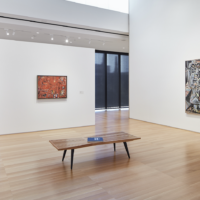
New Pollock and de Kooning
To mark its fifth anniversary, the Anderson Collection at Stanford University was gifted two major works of art in 2019, Jackson Pollock’s 1944 Totem Lesson 1 and Willem de Kooning’s c. 1949 Gansevoort Street, by its eponymous supporter Mary Margaret “Moo” Anderson. Anderson donated the works in advance of her death on Oct. 22 in anticipation of the launch of a tandem effort to raise $10 million to enhance funding for the museum’s programs and exhibitions, which are free and open to the public.


